Trump’s Déjà Vu China Trade War
January 10th, 2019 by Dr. Jack Rasmus
The past three days US and China negotiators have met in Beijing to try one last time before a true trade war erupts between them in March 2019. Higher level trade negotiators will follow up in Washington in coming weeks. This writer was asked to write a comprehensive article on the Trump trade ‘war’ in general, and specifically in relation to China. That article is appearing in the latest edition of the World Review of Political Economy, published and edited in Beijing. It’s entitled ‘Trump’s Deja Vu China Trade War’. What follows is the first part of that article, which addresses events from the initiation of Trump’s trade offensives in March 2018.
Part 2 will be posted as well subsequently. Both parts trace US trade policy evolution under Trump in 2018, compared with similar US trade offensives under Nixon in the 1970s targeting Europe and Reagan in the 1980s targeting Japan. The historical parallels are interesting, and situate US trade policy as an important element in the evolution of US Neoliberalism.
The two part article is perhaps somewhat lengthy for posting on a blog, but is offered here nonetheless for interested readers, given the timeliness of current trade negotiations underway between US and China, now coming to a head.
PART 1: TRUMP’s DÉJÀ VU CHINA TRADE WAR
“Trade War! Trade War! When Trump pre-announced on March 2 his plan to impose tariffs on steel and aluminum imports, the mainstream press immediately began hyping the line that trade war was looming on the horizon. Panicking, investors ran like lemmings over the stock market cliff after the steel tariff announcement; US allies huffed and puffed, promising tit-for-tat tariff responses on US agricultural goods or commercial aircraft; Trump’s traditional elite advisors, like Gary Cohn, former CEO of Goldman Sachs investment bank and head of Trump’s economic council, resigned later that week—no doubt in part due to frustration and disagreement over Trump’s unilaterally announced tariff.
The ‘Stalking Horse’: Steel-Aluminum Tariffs
At week’s end, on March 8, 2018, Trump proposed to implement steel and aluminum tariffs universally, across the board, affecting all importers to the US.: 25% tariffs on steel imports and 10% on Aluminum. The big 5 US steel importers are Canada, Mexico, South Korea, Brazil, and Germany—collectively responsible for $15 billion a year in steel imports. Canada, Russia and the United Arab Emirates are the major aluminum importers. (Worth noting, for 2017 steel imports China is well down the pack, tenth or eleventh on the list, contributing only 2.2% of US steel, importing in the millions of dollars annually—not billion—and mostly semi-finished steel goods used by US manufacturers for fabricating final goods produced in the US.) When announced on March 8, Trump argued there would be no countries exempted from the 25% tariffs on steel and 10% on aluminum.. That quickly changed.
By mid-March, Canada and Mexico were temporarily exempted from the tariffs, even though they were among the top four largest steel importers to the US, with Canada largest and Mexico fourth largest. Thereafter, Brazil (second largest steel importer), Germany, and others steel importers were exempted. And Canada, by far the largest aluminum importer to the US, accounting for 43% of US aluminum imports, was exempted as well.
South Korea, the third largest steel importer last year, was exempted from steel tariffs permanently, as it quickly renegotiated its 2012 free trade deal with the US. Moreover, no other significant tariffs were imposed on South Korea as part of the bilateral treaty revisions. What the US got in the quickly renegotiated US-South Korea free trade deal, was more access for US auto makers into Korea’s auto markets. And quotas on Korean truck imports into the US. Korean auto companies, Kia and Hyundai, had already made significant inroads to the US auto market. US auto makers have become dependent on US truck sales to stay afloat; they didn’t want Korean to challenge them in the truck market as well. Except for these auto agreements, there were no major tariffs or other obstructions to South Korea imports to the US. Not surprising, the South Koreans were ecstatic they got off so easily in the negotiations. Clearly, the US-South Korea deal had nothing to do with Steel or Aluminum. If anything, it was a token adjustment of US-Korea auto trade and little more.
So if the Korean deal was a ‘big nothing’ trade renegotiation, and if virtually all the US major steel and aluminum importers have been exempted worldwide, what’s Trump’s new trade policy aggression all about? US steel and aluminum imports combined make up only $47 billion—a fraction of total US imports of $2.36 trillion in 2017.
Was the steel-aluminum tariffs announcement just another example of Trump bombast, launched via tweets from the second story of the White House at 3am, to be followed by a quick retreat? Was the South Korean agreement a template and a big ‘softball’ for later negotiations with US trade allies—Mexico, Canada, Europe? Was it Trump shooting off his mouth and then retreating following pressure from his advisors and US business interests? Was the tariff announcement a ‘stalking horse’ for something bigger? Perhaps the tariffs were a cover for domestic political objectives—aimed either at agitating and mobilizing Trump’s political base in ‘red state’ America in preparation for midterm US elections in November 2018 or even a Trump decision to fire special investigator counsel Mueller in coming weeks? Playing the ‘economic nationalist’ card and mobilizing his base, by initiating new tariffs and talking of a ‘trade war’, would serve both Trump domestic political objectives.
For polls show Trump’s steel-aluminum tariffs announcement played well in the Midwest, the great plains states and the South; and especially in those steel and mining towns of Michigan, Ohio, West Virginia, Pennsylvania, Minnesota—i.e. those key swing states that gave him the narrow margin of victory in the 2016 elections! Even if he quickly shelved the tariffs, the media hype sent the message Trump wanted to his base: he was doing something about the decades-long loss of steel and mining jobs in those regions since the 1980s. In short, how much of the steel-aluminum tariffs were for domestic political consumption and how much not?
That question applies as well to the subsequent trade actions by the Trump administration. By the end of March, given all the exemptions, it became clear the real target of Trump’s trade offensive was China and not the rest of US allies.
A closer look at Trump administration statements since March 2018 reveals that Trump’s anti-China trade offensive has had less to do with China general imports to the US and more about US next generation technology transfer by US corporations to China. Next gen technologies like Artificial Intelligence (AI), G5 wireless networks, and similar cyber-security and militarily strategic tech now in development.

As Trump’s new chair of his Economic Council, Larry Kudlow, put it in March,
“There’s no trade war. All we’re trying to do is protect US technology”.
Kudlow added a month later, in early April,
“Sometimes you have to use tariffs to bring countries to their senses”.
Tariffs are the tactic, not the strategic policy objective. And if trade deficits are not the primiary issue, and tariffs are only the tactic, then what is the strategic objective? It’s technology transfer and domestic politics. Perhaps the US defense sector, in particular the NSA and Trump’s military generals-heavy administration, are playing a greater role in the US-China trade war in the background than is thus far noted by the media. And not enough attention is being given to the role of domestic political events as well.
Put another way, at the level of appearance, the US trade deficit and China imports to the US may be the target for purposes of public opinion. But behind the appearance, it’s more likely that US domestic politics plus US long term military planning are the two more important drivers behind Trump’s emerging trade war. All of Trump’s tariffs and subsequent trade measures are being invoked based on an obscure ‘national security’ clause in US trade legislation. And China is increasingly the target, as tariffs and other measures are suspended and reduced for US trading partners—with the exception of China—as the US pursues a soft trade ‘offensive’ against all its other trading partners. As Trump himself tweeted when the initial steel and aluminum tariffs were announced on March 8,
“I have a feeling we’re going to make a deal on Nafta. If we do, there won’t be any tariffs on Canada and there won’t be any on Mexico”.
Even with China, it’s not so much China imports that the US is most concerned about. It’s China’s challenge to US technology development and leadership and the implications of that challenge for US security, defense armament, and US continued dominance in war making capabilities that’s behind even the US-China trade dispute. That technology objective, plus the convenient use of trade in general, and China trade in particular for Trump’s domestic political purposes, are together the real objectives of US trade policy.
The US Plan to Target China
The US focus on China and technology transfer issues as the primary objective was revealed months ago. The US anti-China trade offensive was initiated in 2017 and has been in development for at least a year. The opening of a trade war with China did not begin with some impulsive Trump tweets in March 2018. It has been in the works since at least last August 2017.
In August 2017 Trump formally gave the US Office of Trade (OUST) the task of identifying how China was transferring US technology, “undermining US companies’ control over their technology in China”, as well as seeking to do so by acquiring US companies in the US. On August 18, 2017, the OUST laid out in writing four charges in a formal investigation it was undertaking, accusing China of actions designed to “obtain cutting edge in IP (intellectual property) and generate technology transfer”. All four charges were intensely technology transfer related.
That August 2017 scope of investigation document was then reproduced verbatim on March 22, 2018, with the expected findings and recommendations, in the 58 page 2nd OUST report of March 22, 2018 that publicly launched Trump’s trade offensive against China. China was found ‘guilty’ of aggressively seeking technology transfer at the expense of US corporations, both in China and the US. All four charges of August 2017 were found to have been violated by China.
Based on the OUST report of March 22, 2018, and the report’s recommendations (and its list of 1300 target products),Trump announced plans to impose $50 billion in tariffs on 1300 China general imports, ranging from chemicals to jet parts, industrial equipment, machinery, communication satellites, aircraft parts, medical equipment, trucks, and even helicopters, nuclear equipment, rifles, guns and artillery.. Trump may have appeared in March 2018 to have shifted gears in his trade policy—from a general steel-aluminum tariffs focus to a focus targeting China trade— but China has been the planned primary target.
In other words, China and the specific 1300 tariffs were the target at least from August 2017, and likely in internal planning when Trump first took office in January 2017. Trump just set it all in motion on March 23, 2018. The China trade war was set in motion a year earlier. The prime objective for the US has always been stopping China technology transfer. The OUST list of 1300 tariffs was, and remains, a ‘bargaining chip’ to exchange for what Trump and the US really wants from China: reducing US technology transfer.
A somewhat curious event in the preparation for targeting China occurred only days before the March 23, 2018 OUST report release, when Trump himself tweeted he’d like to see 1$ billion in tariffs on China. How then did the official policy become $50 billion after March 23, 2018? Was Trump initially out of the loop of US elite China trade policy in development? Did the China-US trade war really originate with Trump? Was it being planned by others, with Trump brought on board after seeing the domestic political possibilities for himself? One can only speculate. Nevertheless, on March 23, 2018 the targeting of China-US trade became official Trump policy.
The Phony US Trade War
The Trump administration has been pursuing a ‘dual track’ trade offensive. The soft track targets US allies in Europe, Americas, and select Asian economies; the China hard track is rooted in US military-defense planning. Both serve Trump’s domestic political objectives. The China trade war is real; the trade war with US allies is phony, by which is meant it is only seeks token adjustments to trade relations which Trump intends to hype for domestic political consumption.
That China and technology are the primary objective in Trump’s true trade war does not mean that Trump will not continue to try to renegotiate bilaterally with other US allies to reduce the US’s growing trade deficits worldwide. China-USA total trade in 2017 amounted to $656 billion. But USA-Canada and USA-Mexico total trade was $568 billion and $588 billion, respectively; or $1.16 trillion. That means total NAFTA trade is nearly double total trade of US with China.
Nonetheless, NAFTA trade negotiations, as well as trade renegotiations with South Korea, Europe and Japan have, and will, result in minor adjustments and little reduction in the US overall trade deficit. The South Korea-US deal of 2018 is the template. As in the recent South Korean deal, Trump achieved only token concessions from NAFTA partners—mostly minor changes in auto quotas and agriculture. He then exaggerated and hyped the results to his domestic political base, describing it as some significant big achievement. Like the South Korea deal, however, the NAFTA 2.0 wasn’t.
This ‘dual’ track strategy seems to be working for Trump. Since announcements of tariffs and trade measures beginning in early March, his public opinion approval ratings have risen, according to a consensus of pollsters. And polls taken in his ‘red state’ heartland base show support for his tariff actions, and even if it has meant an initial loss of jobs and business revenues.
Trump’s Déjà Vu Trade War in Historical Perspective
Periodically, US corporate interests and policy makers launch a major restructuring of US trade relations. This is usually when they deem it necessary to rearrange the rules of the game with trade when US interests are being challenged or when the global economy is weakening and they consider it necessary to protect the US share of a slowing global trade pie.

In 1971 such a restructuring was undertaken by then President Richard Nixon. The US economy had been experiencing a rising rate of inflation in the late 1960s as a result of US excess spending on Vietnam war, the cold war arms race with the USSR, the race to the moon, and expanding social programs associated with the so-called Great Society. Nixon introduced what he called his ‘New Economic Program’ in August 1971.
At the center of Nixon’s NEP was the US abandonment of the 1944 global ‘Bretton Woods’ international monetary system that the US itself had set up at war’s end to ensure its dominance of the new world order in currency, trade flows, and US foreign direct investment worldwide. Under that system the US dollar was pegged to gold at $35 an ounce. Other countries could sell their accumulated dollars in exchange for US gold. Because US inflation was accelerating in the 1960s it was in effect making US goods less competitive. European economies did not want to hold devaluating dollars and were exchanging them for gold. Nixon decided he did not want to sell US gold any longer, even though required under the Bretton Woods systems to do so. So he simply abandoned the 1944 system the US had established. He unilaterally and arbitrarily changed the rules of the game to suit US interests. Immediately the dollar began to devalue, making US businesses more competitive with their European rivals. European currencies rose higher, making them less competitive. To supplement the move, Nixon also imposed tariffs on European imports to the US, while introducing subsidies and tax cuts for US businesses exporting US products. By 1973 the consequences were institutionalized in the so-called Smithsonian Agreement. The US would no longer sell gold. Currency exchange rates would henceforth be stabilized (poorly) by the US and other central banks in Europe buying and selling of currencies to keep them within a range of the dollar. But the 15%-20% dollar devaluation from 1971-73 would remain in place.
The problem of declining US trade competitiveness was the result of US policies. But Nixon’s solution was not to correct US policy errors. Rather it was to make the Europeans correct the problem at their expense by reducing their relative share of global trade. The end of Bretton Woods also meant that central banks would (theoretically) regulate currency exchange rates between countries. In effect this meant that the US central bank, the Federal Reserve, would function as the dominant central bank and the others would have to respond to its initiatives on global interest rate determination. In short, the global trading system was restructured by the US.
A similar development occurred in 1985 under Ronald Reagan. The US experienced double digit inflation in the early 1980s. It then raised domestic interest rates to 18% and began in addition to run $300 billion a year federal budget deficits. This resulted in US businesses raising prices in order to cover the extraordinary rise in rates and costs of borrowing. US products lost their competitiveness to Japanese businesses, which began to import goods to the US at a growing rate. US policies did not bring down rates or inflation significantly by 1985. So the US instead forced Japan to the negotiating table to revise the terms of trade. Japan was forced to inflate its own economy to generate more inflation, to raise the price of their goods and erase their export competitiveness. Once again, a problem caused in the US by US policy was ‘resolved’ by requiring the burden of the resolution to be carried by the trade partner, Japan. The agreement between the US and Japan on trade in 1985 was called the ‘Plaza Accords’. A similar, though less intense, renegotiation with Europe, reached in Paris (Louvre agreements) followed. Once again, when it suited US interests, when challenged by a significant capitalist competitor, the US simply changed the rules of the game.
It is worth also noting that both these trade offensives—Nixon’s and Reagan’s— were launched in the wake of significant expansionary tax cutting and government war spending fiscal policies that produced growing US budget deficits for the US. The subsequent trade offensives were thus designed to expand US exports to supplement domestic US fiscal over-stimulus policies at the time. Nixon’s initiative followed the recession of 1970-71 and his obsession to over-stimulate the US economy by every means to ensure his re-election in 1972. It did, but it simultaneously wrecked the US economy for the remainder of the decade, resulting in domestic stagflation, collapse of real investment, downward pressure on corporate profits and a call from business interests for a fundamental reorientation of US economic policy that would eventually be known as ‘neoliberalism’ and would last until the crisis of 2008-09.
Reagan’s trade offensive followed the recession of 1981-82 and the failure of US policy to address the US’s ballooning budget deficits after 1981 (from tax cuts and spending hikes) and the growing trade deficits as the US dollar rose steadily in the first half of the decade.
The Nixon policy resulted in financial instability in 1973 and failure of several large banks, followed by the worse recession to date in 1973-75 and stagnation for the rest of the decade. Reagan’s policy resulted in even more financial instability in the crash of stock and junk bond markets and housing markets in the latter half of the 1980s, followed by the recession of 1990-91. Europe and Japan fared no better after 1985, with general banking crises in northern Europe and Japan in the early 1990s that were at least in part due to the Plaza and Louvre trade agreements.
A similar pattern is once again emerging under Trump’s trade offensive targeting China. Trump’s current trade offensive follows massive multi-trillion dollar US business-investor tax cutting, which amounted, at minimum, to $4 trillion to businesses, investors, and wealthiest 1% households as result of legislation signed January 2018. Trump’s $4 trillion in tax cuts was quickly followed in March 2018 by a $300 billion two year, 2018-2020, increase in net additional US government spending, mostly defense oriented. By most estimates, trillion dollar a year annual US budget deficits are now on the horizon for another decade.
To pay for the deficits the US central bank, the Federal Reserve, is now having to raise interest rates rapidly and sell record more US Treasury bonds and securities to raise funds to cover the US trillion dollar deficits ahead. However, that central bank policy has had a dampening effect on US economic growth and has led to a significant financial market contraction by year end 2018 that could destabilize growth even further in 2019. The Trump administration is hoping that the fiscal stimulus, supplemented with the benefits of more exports as result of its trade renegotiations, will be able to offset the economic slowdown generated by rising US central bank interest rates.
But this rearranging of fiscal, monetary and trade policies will almost certainly not prove successful—just as similar policy trade offs under Reagan and Nixon ultimately failed as well. The Trump massive business-investor tax cuts have thus far barely ‘trickled’ into the real economy. Most of the tax cuts will be diverted by companies to buying back their stock, paying out dividends to shareholders, used for acquiring competitors (Mergers & Acquisitions), or for paying down corporate debt—just as were US corporate profits diverted and used, from 2009 through 2016 in the US. Trump’s $100 billion a year defense spending will also have less economic stimulus effect—compared to the 1980s and 1970s—since defense spending has become high cost/low job creation in content.
Finally, the trade offensive against China will prove far more difficult for Trump to pull off than Reagan’s trade policies targeting Japan or Nixon’s targeting Europe. The same relationship of forces and relative power simply does not exist for the US today, as it once did in the 1970s and 1980s.
The basis for Trump’s China trade offensive is the 1974 US Trade act, section 301. Invoking it worked against Japan. It forced Japan to reduce its auto exports and build auto plants in the US. It also encouraged Japan to shift from real goods production to financial asset speculation, which led to its crash in 1990-91. But it will prove less effective against China. Some of China’s likely counter-measures and responses have already begun to appear. Among the possibilities are politically targeted tariffs on US exports, devaluing its currency, slowing its purchases of US Treasury bonds, delaying the opening of its financial markets to US banks and investors, launching a nationwide ‘boycott America’ goods program, holding up its approval on global agreements on corporate mergers, and so on.
However, the clearly slowing global economy that became increasingly apparent in the closing months of 2018—including growth both in China and the US—have imposed pressure on both economies to come to a deal in 2019. China’s financial markets have begun contracting as well; its main Shanghai market down nearly 30%. Similarly, the major US markets experienced their worst decline in less than two months, November-December, since 1931. Both real economies, and markets, will slow and decline in 2019, although not without periods of ‘recovery’. Concurrently, Europe’s economy is slowing rapidly, including key economies like Germany, France, and Italy—with a UK Brexit shock also on the horizon. Japan and South Korea, and various emerging market economies also have begun their slide. So economic conditions in 2019 will likely force a China-US trade deal by mid-year 2019.
For what this tentative and likely deal will look like in terms and conditions, Part II of this article follows, addressing the real US-China ‘trade war’—over next generation technology like Artificial Intelligence, 5G wireless, and Cybersecurity. These are not only the next sources of new industries that will drive economic growth for the coming decades, but also the crux of which country dominates militarily in the period ahead. The US and China have been drifting toward a real trade war, are on the brink, but not there yet. That may change in 2019. Should negotiations break down, it will be over technology and not tariffs, trade deficit, or the US demand for more US banker and multinational corporation ‘access’ (read: 51% or more ownership) to China markets. Odds are in favor, however, of a settlement and agreement. Economic conditions are driving both to that conclusion. How the parties structure and publicize any agreement on technology, if they do, will be the key. Most likely, both will agree to generalities and future actions, declare themselves the winner, and move on–with US corporations, bankers, and agribusiness getting their sales and access to China markets. And China buying time to continue its technology policy and development.
*
Note to readers: please click the share buttons above. Forward this article to your email lists. Crosspost on your blog site, internet forums. etc.
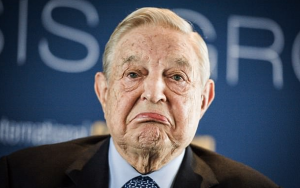


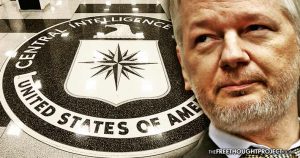
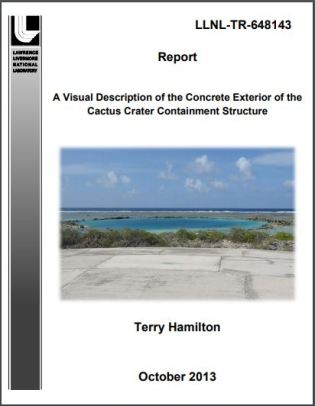

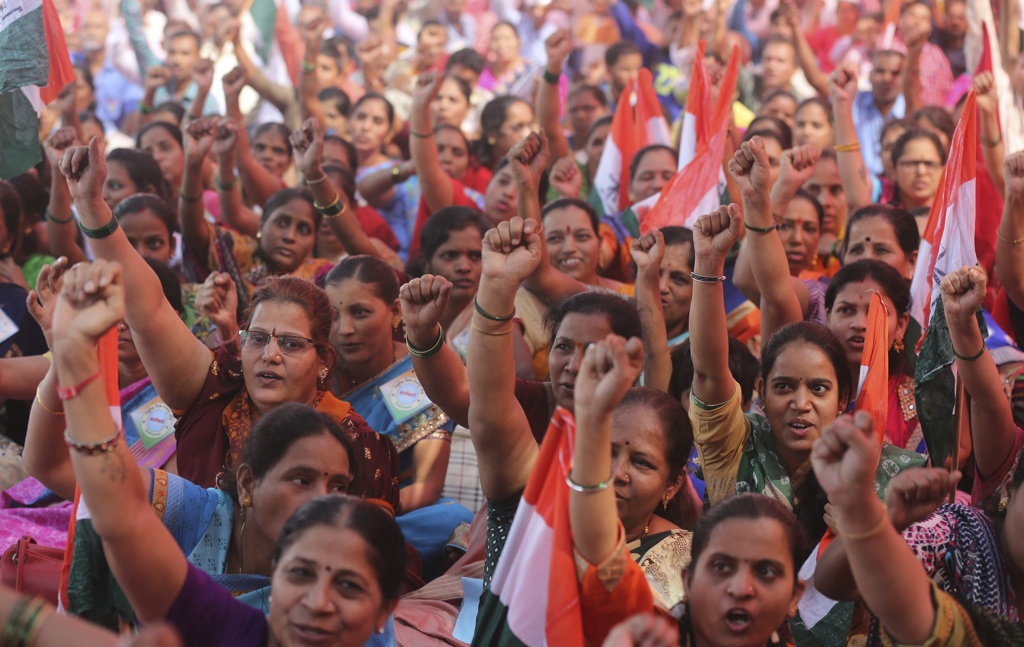
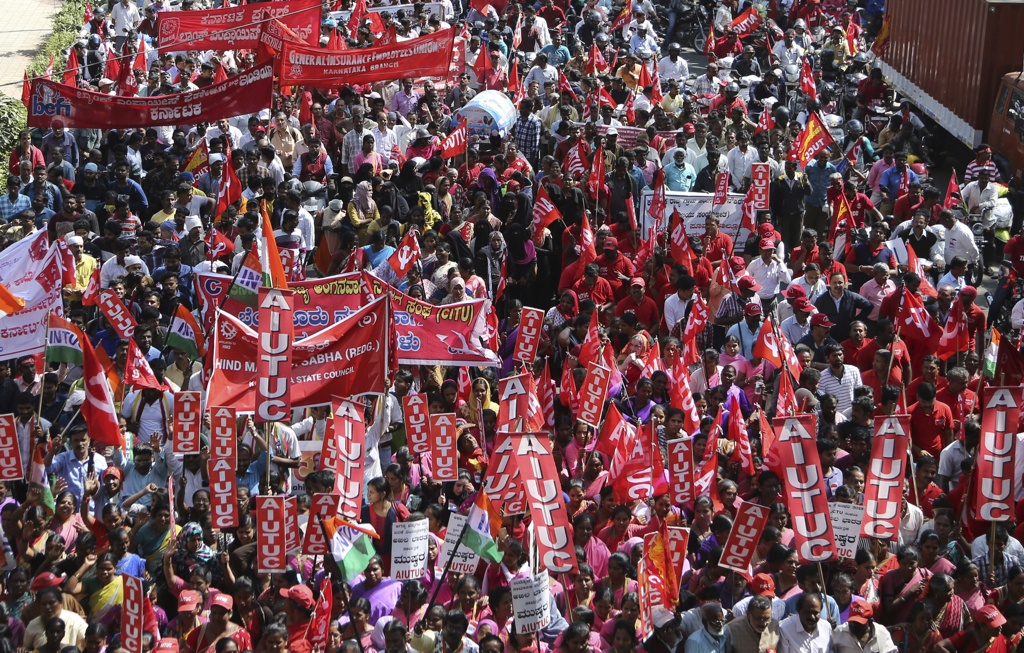
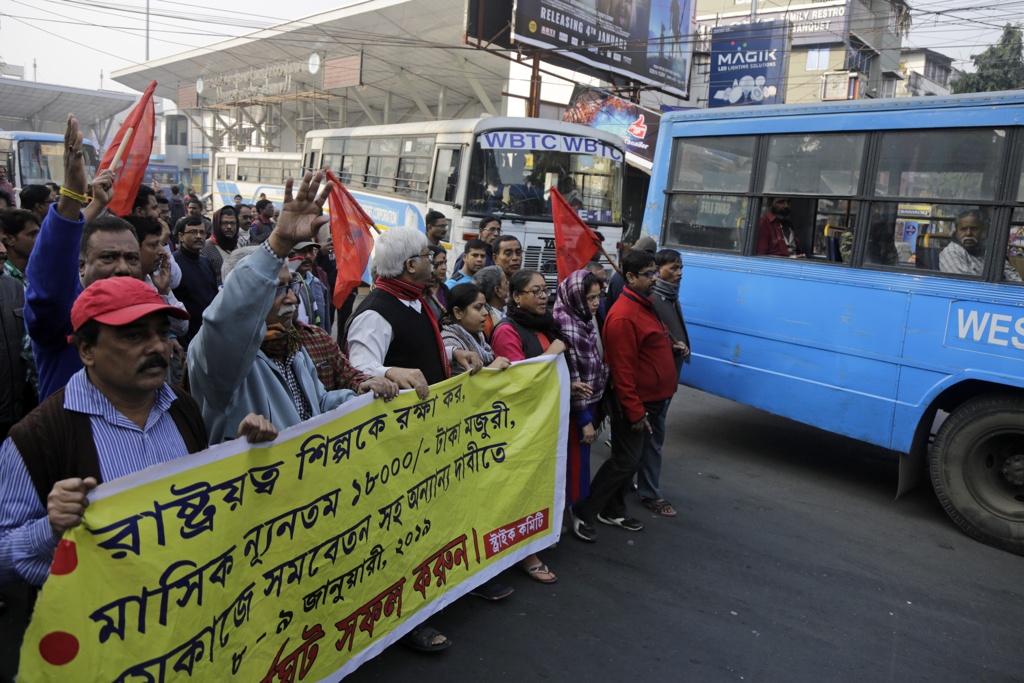
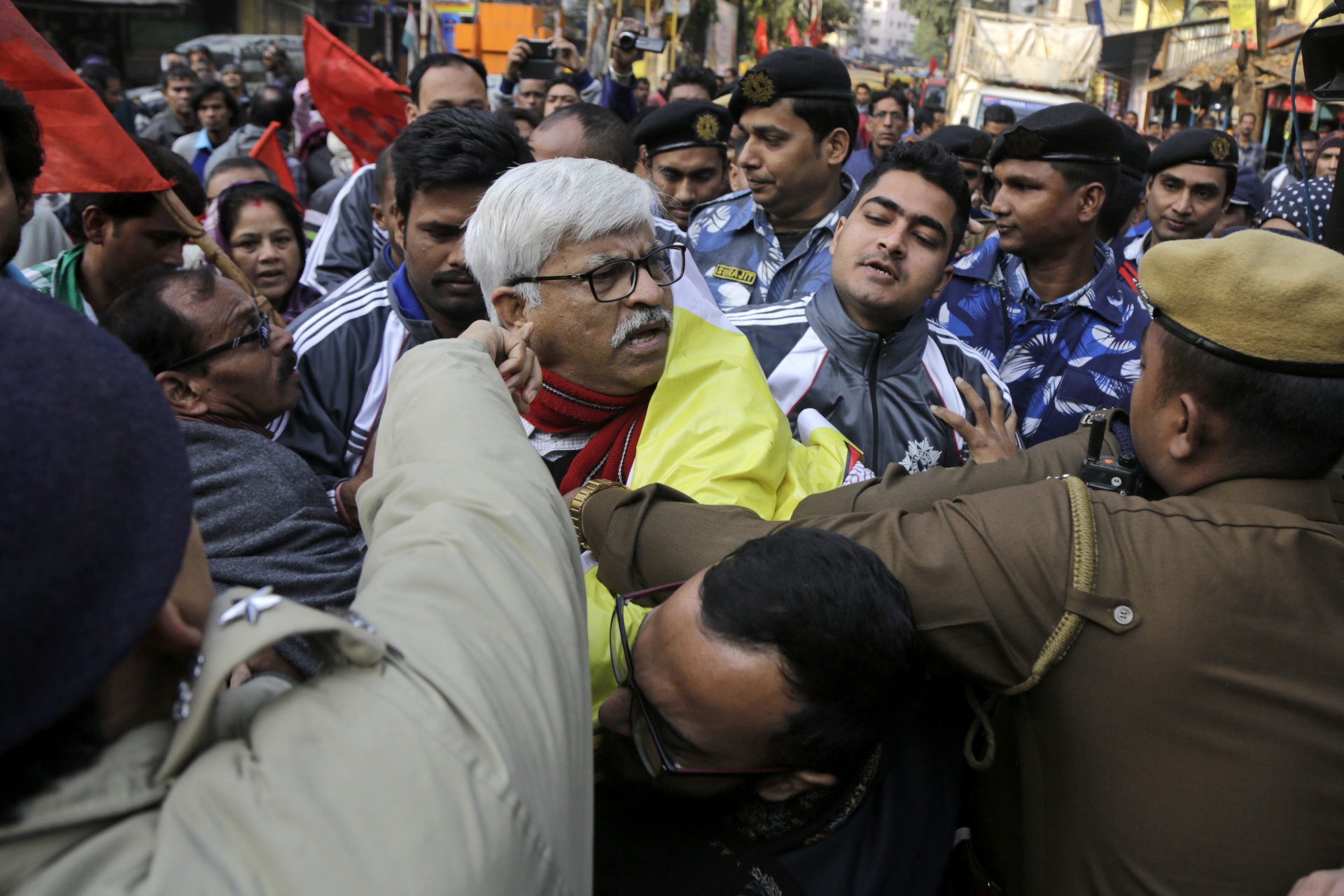
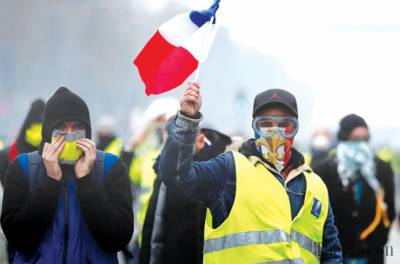




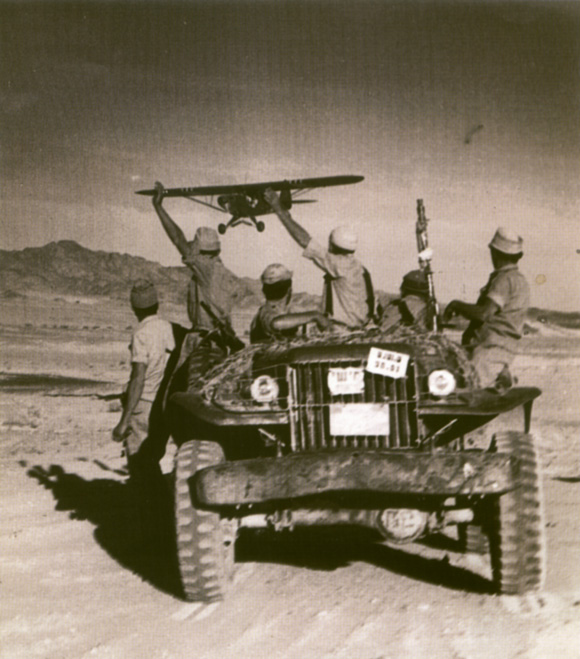





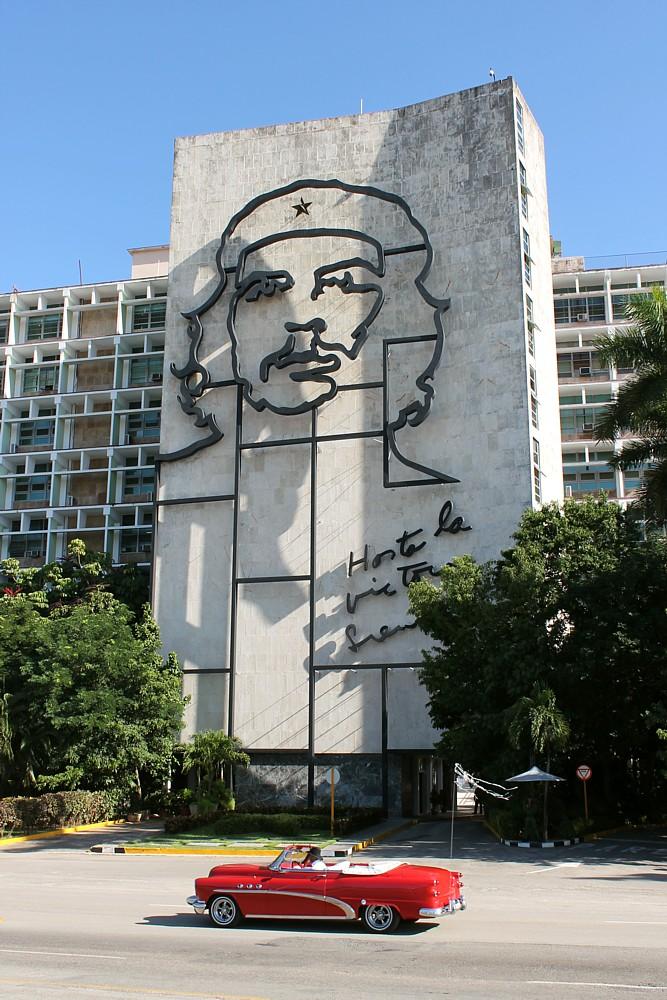

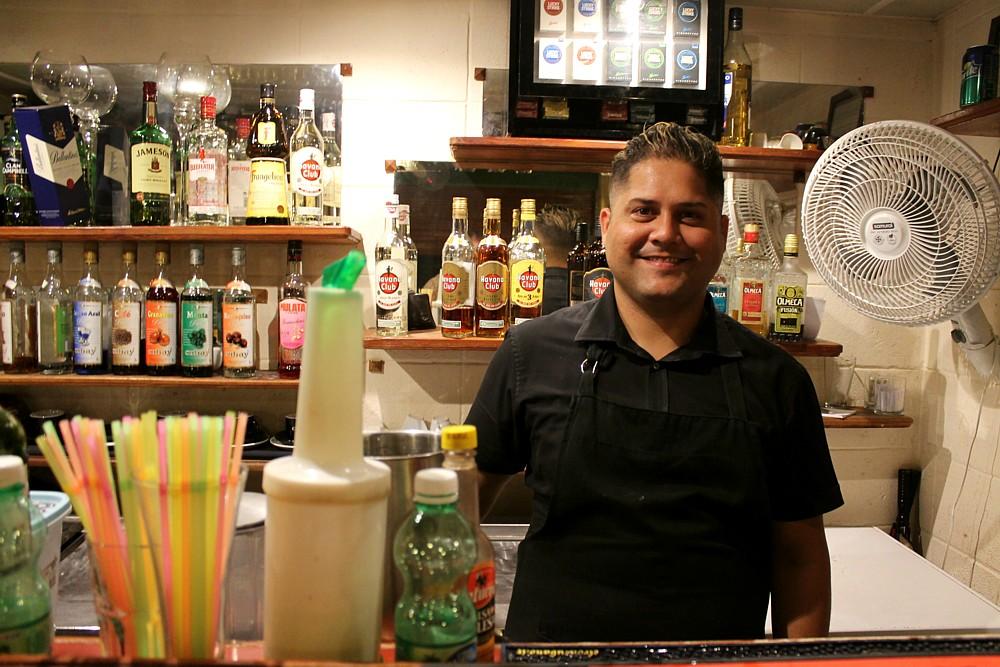
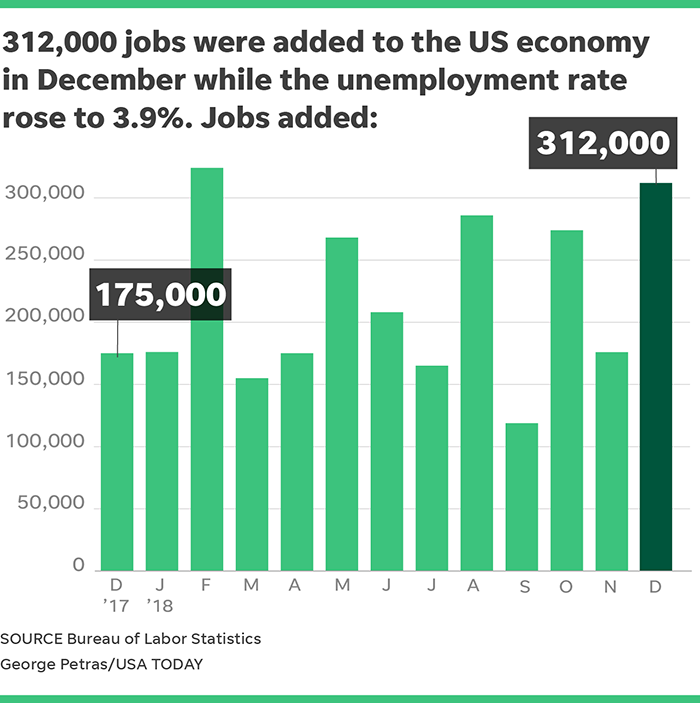


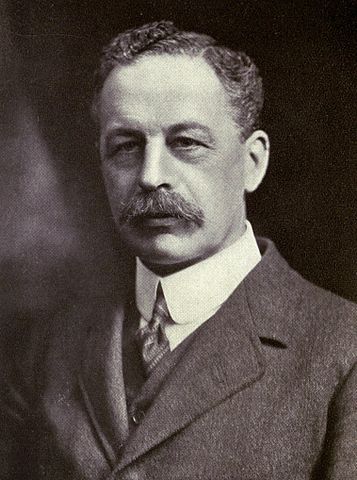



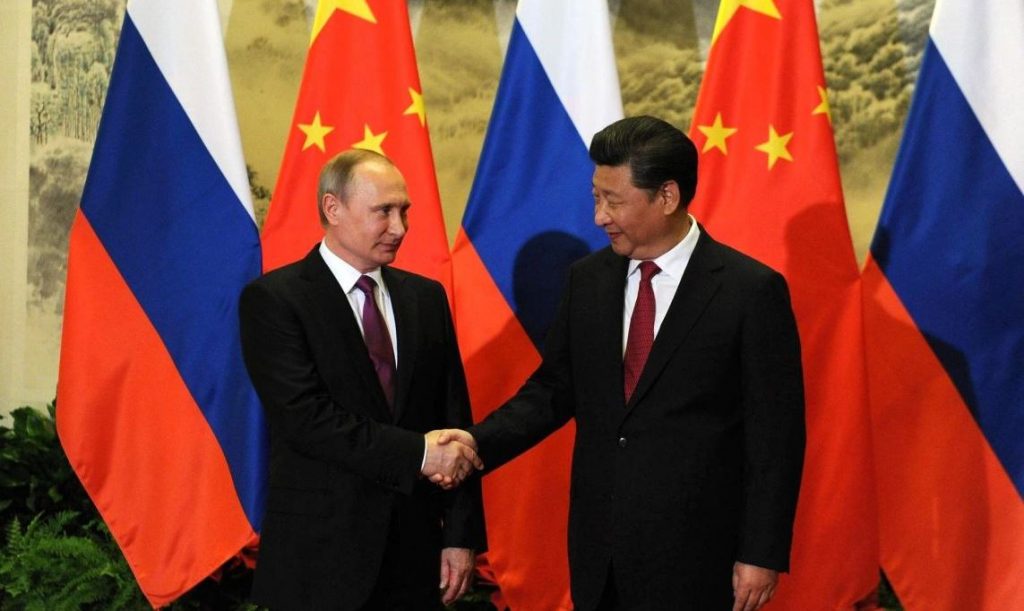 The following are high on the US ‘enemy list’:
The following are high on the US ‘enemy list’: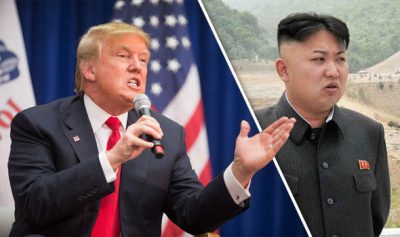
 5) Iran, because of its oil resources, political independence and geo-political alliances in the Middle East, challenge US, Israeli and Saudi Arabia domination of the region and present an independent alternative.
5) Iran, because of its oil resources, political independence and geo-political alliances in the Middle East, challenge US, Israeli and Saudi Arabia domination of the region and present an independent alternative.










































